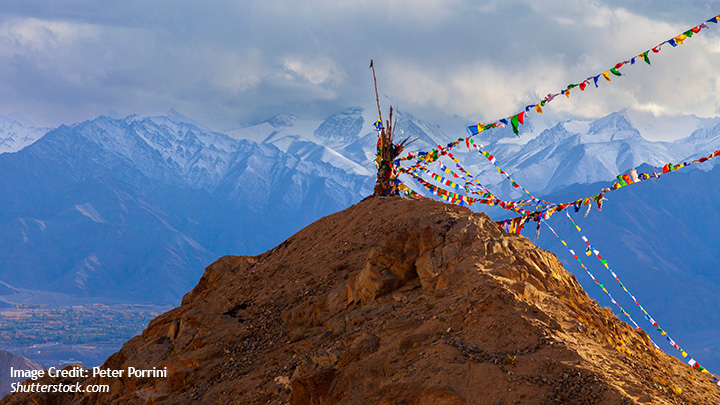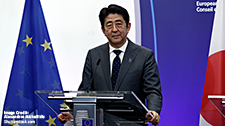Why the Himalayan Region Is Integral to a Rules-Based Order in the Indo-Pacific

Jagannath Panda, Ryohei Kasai and Eerishika Pankaj
In June 2024, former U.S. House Speaker Nancy Pelosi minced no words in criticizing the Chinese government and President Xi Jinping for the persecution of Tibetans, including attempts to erase their culture. Pelosi was part of a U.S. delegation that met with the 14th Dalai Lama in Dharamshala, India, where he has been living in exile since he was forced to flee Tibet in 1959 after an uprising against China’s repressive rule was brutally suppressed. China considers the Dalai Lama a dangerous separatist and seeks to prevent all diplomatic contact with him.
Pelosi’s acrimony went beyond empty rhetoric. Building on the U.S. Congress’ “Resolve Tibet Act,” passed only days before her visit to Dharamshala, she heralded stronger U.S. support for the Himalayan region, which China is trying to rebrand as “Xizang,” the Mandarin term for Tibet. Her remarks have yet again brought to the forefront the fact that Chinese militarization in Tibet remains a perennial concern not just for India, but for the United States – and its Indo-Pacific allies and partners.
For China, Tibet is perhaps the most critical, but not the only, aspect of its growing Himalayan troubles. Most notably, China has a long-standing border dispute with India, which has kept getting more hostile since Xi Jinping came into power – recall the 2017 Doklam stand-off, the defining 2020 Galwan Clash, and the 2022 Tawang skirmish, to name but a few prominent contentions along the Line of Actual Control (LAC).
Concurrently, China has been pursuing its “salami tactics” strategy with the neighboring states, including the small land-locked nation of Bhutan. Then there is the question of China’s increasingly unsustainable, “debt-trap”-inducing Belt and Road Initiative (BRI), which has already cast a dark shadow over economically weaker Himalayan states like Nepal and Pakistan. Most importantly, China’s massive hydro-infrastructure constructions and upper-riparian-derived unilateral control of South Asian rivers that begin in Tibet have raised serious questions about the impact on Himalayan ecology and control of resources.
Against such an overall bleak scenario, will the latest Pelosi visit engender greater geopolitical awareness and considered responses, beyond the human rights questions, in the West about China’s tactics? Importantly, can the Himalayas as a whole be featured as a primary focus of the Indo-Pacific strategies, not just as a byline to specific conflicts be it vis-à-vis India or Tibet?
Read this full article co-authored by Jagannath Panda, Ryohei Kasai and Eerishika Pankaj at The Diplomat. This piece is an outcome of Stockholm Center for South Asian and Indo-Pacific Affairs (SCSA-IPA) research project titled ‘China’s Himalayan Hustle’.
Related Publications
-
Report of the Webinar on China’s Himalayan Hustle – Part II: Will Eco-Dominance Be China’s New War Front?
This report is an outcome of the webinar titled “China’s Himalayan Hustle – Part II: Will Eco-Dominance Be China’s New War” held on June 18, 2024. Dr. Jagannath Panda moderated […]
-
Nepal Is Hardly China’s Best Bet in the Himalayas
In July, Nepal’s fractious politics witnessed yet another churning in a span of months: 72-year-old veteran politician Khadga Prasad Sharma Oli of the Communist Party of Nepal–Unified Marxist Leninist (CPN–UML) […]
-
China’s Himalayan Hustle: Revisionism Resistance Must be the Order of the Region
This edited volume brings together papers to highlight the challenges and opportunities in mapping China’s Himalayan hustle. It aims to advance key debates about the importance of this region to […]
-
Strong Europe-Japan Relations are a Legacy of Shinzo Abe
Abe was a firm proponent of strengthening a free, open and rules-based Indo-Pacific. Not only was he steering Japan away from total dependence on the U.S. for its security, but […]
-
To What Extent is China a ‘Security Threat’?
The current international order, led by the United States, is undergoing phenomenal political, economic, and security changes that will decide whether the order will continue as it is, or a […]




